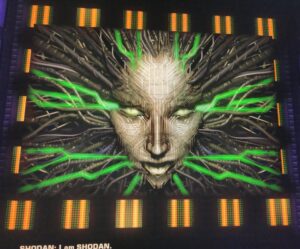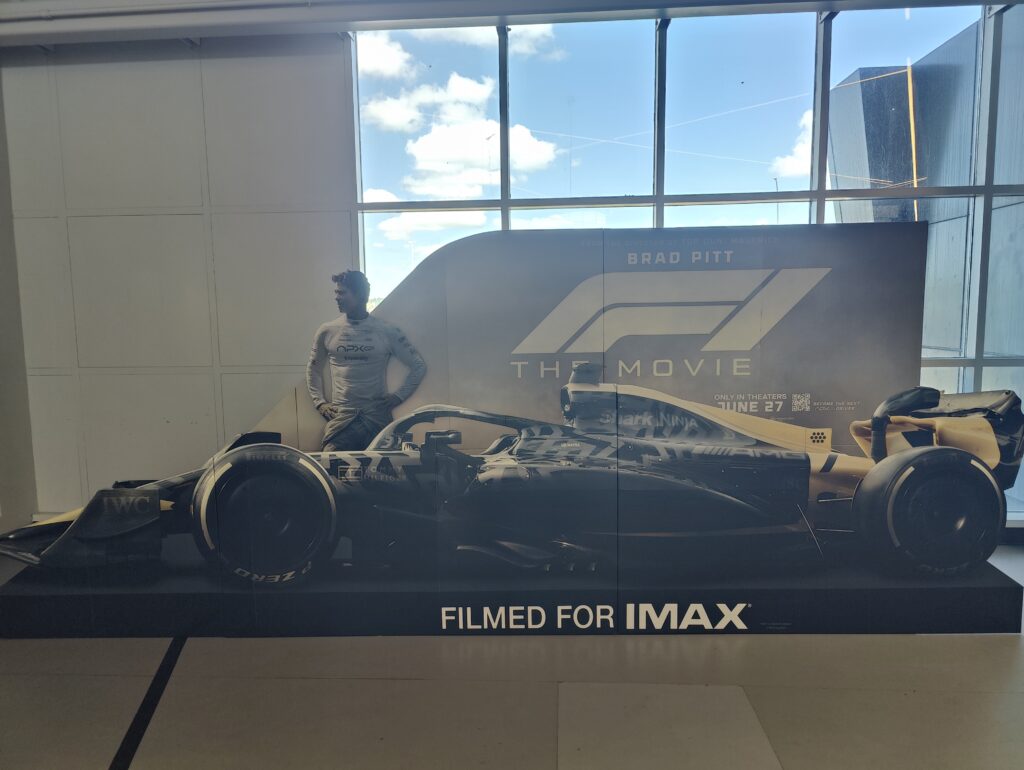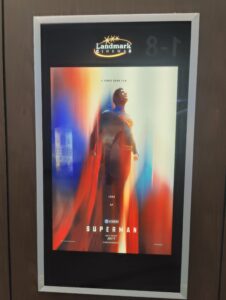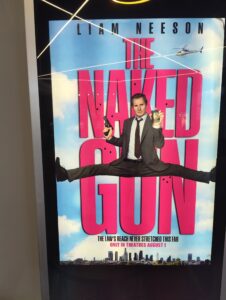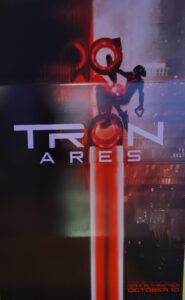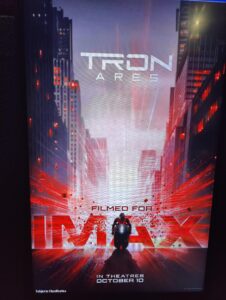(This was originally published as Implausipod Episode 50 on November 8, 2025.)

https://www.implausipod.com/1935232/episodes/17441059-e0050-streets-ahead
A wrong turn and a 20 minutes detour due to poor signage led to an inquiry into the evolution of autonomous vehicles. We’ll examine how the idea has appeared in popular culture, both within and outside science fiction. Turns out when it comes to self-driving cars, we’re thinking street ahead.
Get in. Let’s go for a ride. I wanna take you on a little trip around my town, down a few of the wide open roadways. We caught them at a perfect time of day. The city is still sleeping and the roads are mostly empty. It’s during these quiet times so we can see how the roads actually work. We’ve got a corner coming up here, but the main road continues this way for a bit before turning right to the north.
We continue around the city, but the exit on the right is actually for drivers continuing left towards the west. Curious. As we come through this lovely pass to see the city laid out before us, we come to the same issue. A quick turn to the right to go left to head to the west and the rocky mountains.
The road straight ahead is called Stony Trail North, but it’s headed east. Confused. You won’t be after this episode of the Implausipod.
Welcome to the ImplausiPod, a podcast about the intersection of art, technology, and popular culture. I’m your host, Dr. Implausible, and in this episode we’re asking who are roads for, are they built for the cars or the drivers? It’s an interesting question. One we have to ask more often as we’re seeing more and more self-driving cars on the road, the desire for autonomous vehicles has some deep roots and some of those cross through science fiction.
So it isn’t just because I accidentally took a wrong turn due to confusing road signs and had to take a 20 minute detour down the highway as described in the intro. No, no. That had nothing to do with today’s discussion, but the truth about those confusing road signs has a lot to do with our autonomous vehicles as well, because it’s difficult for us to navigate than how can anything else hope to understand it.
It turns out we have different and overlapping systems of direction that we use when we’re trying to navigate the world and humans having grown up in it. Generally pretty at adept at uh, parsing it out. But once you try and break it down and explain it to something, something that can only follow rules, it gets quite complex indeed.
So we’re gonna get into these rule-based systems in a little bit, but first I wanna look into the genesis of an idea of how the concept of self-driving vehicles came to be. Because what a vehicle that can move itself, that seems very implausible.
IMPLAUSIBILITY 0 1 4 Autonomous Vehicles
In this week’s implausibility, let’s take a look at how autonomous vehicles have shown up in science fiction in their various forms. It comes as no surprise given how prevalent automobiles have been in the 20th century, that the two have been combined so often. But one of the first instances wasn’t really a car at all. One of the earliest autonomous vehicles was a bulldozer.
And not just any bulldozer but the Killdozer. That’s right. Killdozer. First appearing in the 1944 short story of the same name by Theodore Sturgeon. Here we have a proper autonomous vehicle that decides to take revenge on the humans around it and the killdozer is autonomous. It has goals and agency, albeit those of the alien energy weapon that has possessed a normal construction bulldozer and it proceeds to fulfill its original programming.
Hence, the killing and the dozing. The rampage ends when the machine is electrocuted in a pool, going quiescent until it’s possible long-lost cousin shows up in the movie Idiocracy years later. Killdozer appears early. Science fiction had quite entered its golden age, so there weren’t that many stories yet.
And of course when it comes to robots and science fiction Isaac Asimov has to get a word in, and in 1953 he gave us a story of Sally, a car with the Robo Brain. In fact, in this world, the only cars that are allowed are the ones that have robo brains as humans are not trusted behind the wheel, so to speak, as the
Wheel no longer really exists. The robo brains of the cars here are not described as the positronic brains common to the rest of Asimov’s robot stories either, and they aren’t bound by the three laws. So we get an alternate take of what vehicles would be like in that universe. But the idea of autonomous vehicles is taking hold.
The next entry on our list from the very next year, 1954, is the first time we see a vision of autonomous vehicles on the screen. In an animated short produced by General Motors, titled Give Yourself the Green Light. This 22 minute mix of film and animation showed overhead shots of parts of the highway system and the problems that the USA was facing with congestion.
We can recognize that the short by GM is what we’d consider propaganda, trying to make a case for the expansion of the highways and opening up more of the country to cars. So that gives us maybe a bit of a hint at the answer to the question of our episode, but let’s go further. The push for highways really kicks into high gear a little bit later in the decade when Disney released Magic Highway USA, directed by Ward Kimball, and airing on the Disneyland TV series in May of 1958.
This animated short depicted how the automobile of the future would fit within society, and it falls along the line of the GM video we just mentioned by framing things about the highway, though centering on the individual within the car Here, the autonomous vehicle is coupled with an autonomous driver forming a complex, almost cybernetic assemblage that we’ll have to dig into more in a little bit.
What’s truly impressive about the short is the list of innovations that it showcased that have since been developed. Some of these include electronic dashboards, traffic bulletins, overhead maps, TV for a rear view screen, heads up displays, and of course autonomous vehicles. Another interesting element later in the short was the introduction of containerized shipping first invented in 1956.
The first containerized cargo ship didn’t leave port until 1958, the same year as the short. Containerization was growing by the time Magic Highway aired, but it hadn’t reshaped society in the world economy the way it has since. Of course, looking back at the show from a viewpoint from 2025, we see a number of elements that aren’t quite as positive, including the decentralizing of the urban areas and the sprawl to the suburbs, the private houses and isolation and the paving of vast tracks of wilderness.
Magic Highway definitely remained a product of its time. I can’t recall whether I first saw this as a child at school when they’d roll out a film to keep us occupied on a substitute teacher day, or if it showed up on repeats during a Saturday or afternoon cartoon block, or maybe even repeated in Sunday primetime on the wonderful world of Disney.
The point being like a lot of Gen Xers, I saw this at a young and impressionable age. If you don’t recall the Magic Highway short, you may be thinking of some others as Disney produced several starring the iconic Goofy during this time, including Motor Mania from 1950 and Freeway Phobia from 1965. But these were made to address a generation of current drivers as a public service and were far less future-focused, more educational in nature.
For example, the Freeway Phobia short highlighted safe driving techniques, minimum stopping distance, and the risks of distracted driving and the dangers it poses. With F Progress, the character portrayed by Goofy causing pile ups of with every misstep. Moving on from the Magic Highway, several of the inventions seen within it would pop up again on primetime again in 1962 when the Jetsons appeared in the fall season
alongside the Flintstones. The flying cars may have overshadowed the autonomous driving features, but George doesn’t have to spend a lot of time looking at the road or concerned with the details of where the car is going. He also has some of the creature comforts and vision for car occupancy in a Magic Highway as well, though ultimately, it’s all to get him into the office in the morning as if the Jetson future doesn’t have remote work.
Both the Magic Highway and the Jetsons are really emblematic of that mid-century vision of the future. We talked about in the California Ideology episode back in episode 38 in the sci-fi in the 1960s. We also saw the rise of vehicles that explicitly weren’t autonomous as Frank Herbert’s Dune in 1963.
had humans taking any role where we might expect to see automatons in the mainstream science fiction. Other visions of autonomous vehicles persisted throughout the sixties, but these were less often seen as the vehicles themselves and as often as not regular vehicles piloted by robots, androids, and various cyborgs.
The 1970s was the era of the Cyborg with Steve Austin, the Six Million Dollar Man appearing in primetime during the early part of the decade, and the Bionic Woman soon followed along with DethLok Cyborg, and a host of man-machine hybrids in the comics pages. We’ll take a look at the Six Million Dollar Man’s legacy
soon enough, though that might be in early 2026, as the schedule currently looks like. It was in the 1980s when autonomous vehicles made their real big push into the current cultural consciousness. First and foremost of these was Knight Rider, produced by Glen A. Larson, and airing on NBC in Primetime beginning in 1982 and starring David Hasselhoff, pre Baywatch and cheeseburgers, fighting crime at the behest of a billionaire, while partnered with an autonomous vehicle named KITT, short for Knight Industries
Two Thousand. KITT was a modified TransAm with a custom front plate that had a moving red light, which was the semiotic code for intelligent machines in the seventies and eighties. Though their motives might be suspect, depending on if you were dealing with Hal 9000 or the Cylons of BSG. KITT is basically a mobile supercomputer that happens to have the shell of a car around it, and is generally described during the show as having cybernetic logic.
It also has a voice module in various scanners and electronic countermeasures, ECM, allowing for enhanced visuals and signal jamming, and a variety of other sensors from heart monitors to bomb sniffers or whatever else is needed by the plot of the week. KITT is also powered by Hydrogen Fuel Cell and uses a turbojet engine along with afterburners.
There’s also a host of offensive and defensive weapons, ejector seats, blenders and beer coolers, and whatever else. KITT kind of had it all. Seriously, Hasselhoff is often a liability compared to KITT. The Inspector Gadget to KITT’s Penny, but still able to do the odd task that KITT couldn’t get done, as is the way of sci-fi series.
We also got the dark side doppelganger to KITT, KARR. That’s spelled K-A-R-R. Appeared in season one, episode nine, episode titled Trust Doesn’t Rust. KARR proved popular enough for return appearance in season three as well, Evil goatee and all, the Samaritan to the Machine, the Lore to KITT’s Data. KARR was a prototype version of KITT’s design programmed for self preservation and a lot more hostility when they faced off.
KITT was able to win due to moxie. Good thing that that submarine was programmed in.
As is the Hollywood way, seeing somebody else’s cool idea and trying to copy it to cash in. Larson would try to repeat a success with a Tron inspired series called Auto Man in 1983, but this failed to capture an audience with poor scripts, rough, special effects, and high costs, dooming it to an early cancellation.
We’ll look deeper into Tron during our next episode, but I don’t think we’re gonna talk much more about Automan at all.
Implausibility, 50% complete.
We would be remiss in our look at self-driving vehicles if it did cover the other place that they show up. In our nightmares. For every sci-fi story of the promise of autonomous vehicles, there’s a horror story that preys on our fears. Sometimes. They’re the same story though, like Killdozer. This fear is often the fear of the loss of control of the machines we use.
As such, they often showed up as ghost stories rather than being overtly science fiction. We’ve been telling stories about ghost vehicles for longer than we’ve been talking about autonomous vehicles since the tales of ghost ships, possessed trains and haunted stage coaches. I’ll skip past those tales of the Marie Celeste and the Stagecoach in and move into the more modern era.
Perhaps the most famous example is Christine, Stephen King’s 1983 tale of a Possessed Plymouth. A story brought to life on film by John Carpenter later that same year. Here we have a demonic vehicle with an ulterior motive that relentlessly hunts down those who have wronged it. Christine is not fully autonomous.
Occasionally requiring the aid of those nearby, but has more in common with the Daemon weapons we might see in more fantastical settings. Stephen King has explored possessed vehicles more than once with the 1973 short story Trucks being turned into Maximum Overdrive in 1986, just in time for an AC DC soundtrack.
Here are the motivating forces of extraterrestrial origin. A comet’s tail, bringing sentience to all machines on earth. We have multiple vehicles working in coordinated fashion, corralling and eliminating the survivors, though subject to one of the weakness of 1980s cars, rocket launchers, and running out of gas.
There’s definitely some deep seated concerns about the seventies fuel crisis lingering in the narrative here, but it isn’t just ordinary vehicles that are in ghost stories, we have possessed weapons of war. The Haunted Tank was a comic series published by DC Comics joining Sergeant Rock in the pages of GI Comics starting in 1961.
Here the Possessor is the Ghost of Confederate General Jeb Stuart, and, and their M3 tank is crewed by namesake in World War II, showing up throughout Africa and Europe. Though they would change vehicles from time to time, the tank is mostly operated by the crew and isn’t fully autonomous, but is included here due to the.
Spirit of the thing. The Haunted Tank is also an influence on one of our favorite topics, Appendix W. Within the Warhammer 40,000 universe, the vehicles of the imperium are possessed by the machine spirits as they have fallen technologically and no longer know how their machines actually work. In some instances, the machine spirits are able to provide some limited autonomy, but in other cases, like when the machines and their crew turn to chaos, they may be literally possessed becoming
twisted amalgams of flesh and metal and able to act upon their own. These two axes, Boon or Bane, Promise or horror, can explain much of the divide in modern audiences and their attitudes towards autonomous vehicles. The priming we receive when we are young can stick with us for a lifetime, but these two examples weren’t the only ones, and more normal versions of autonomous vehicles started showing up in versions that are no longer explicitly menacing, but rather just part of everyday life.
Demolition Man and Johnny Cab of Total Recall. I’m looking at you, but I think these last two examples have more in common with chauffered vehicles and we don’t really consider chauffered vehicles to be autonomous unless you have such a low opinion of others that you don’t consider the driver’s, people, and
Hmm. I fear we’ve unlocked something here, as this brings us back to our look at the California ideology and the quest for automation. The further back we look through history, we see that dichotomy arise more and more. The driver is a specialist. The vehicle is something unique, reserved for the wealthy, or a shared resource.
Of course, if you look back far enough, the simplest autonomous vehicle is a horse and buggy. That’s probably not what comes to mind when you’re asked to picture autonomous vehicle, though technically correct is not the best kind of correct in this case.
Implausibility 100% complete.
So what brought us here? Well, a few things, not least of which is me getting lost on the freeway. Often on the internet, in discussion of autonomous vehicles, you’ll hear people asking who asked for this as if the idea of an autonomous vehicle is inconceivable. But as I hope to have shown, there’s some deep seated roots for it, not just in the fantastical realms of science fiction, but also in pop culture more generally, as well as in traditional media.
It turns out that people have been asking for this for a long, long time. We often preach for an empathetic view of technology to consider the potential uses and needs of people other than ourselves. When examining tech, I’m wondering why it is the way it is. Our exploration of autonomous vehicles is no different.
Personally, I don’t have one, and I’m not in a position to acquire one anytime soon either. This does not mean we can’t examine the technology though. Now that we’re well on the way where that implausibility may become a reality, let’s take a look at the state of the art in our present. And here we find there’s a little bit of a challenge, but this challenge is one of bounty fittingly for this harvest season.
There’s so many stories now of self-driving cars as well as buses, trucks, taxis, in all manner of related vehicles that it’s hard to narrow down and focus on the key elements of the story. In part, that’s one of the things that led to the delay of this episode. I got lost on the freeway back in May of 2024 and started drafting this as I was exploring why.
We’ll get into the conclusion of that tale in a little bit, but as I started looking at the reasons and how the challenges I was facing as a driver are similar, yet amplified for designers of navigation systems or. Anything that needs to interface with our roads, the volume of stories steadily increased.
I was trying to stay streets ahead, but kept losing the race with every new twist and turn. So rather than try and encapsulate everything, let’s try and see what this implausibility really means for humans in an age of self-driving cars. As seen with the Disney example of the Magic Highway, there’s an idea that the vehicles on the roadways could become fast and more efficient the more we relinquish control over to machine controlled systems.
We do this in some areas currently, often in flight or on the oceans, trusting our travel to machine calculated systems. In our forthcoming Appendix W episode on Joe Haldeman’s, the Forever War from 1973, we can see how these ballistic systems was trusted as able to calculate the necessary travel faster than any human could react.
Even Han Solo trusted the nav computer when calculated the jump to hyperspace, even if he punched the electronics a few, couple times, just for good measure. This desire to take the wheels out of our hands is ultimately an issue of trust. Trust that we can’t do it correctly ourselves, or at least other people suck as drivers.
I’m okay, which we can see in the California ideology we talked about earlier. There, the cult of acceleration or cult of speed from the era of the Italian Futurists through till now sees the ability to move faster as being a desirable ending of itself by any means necessary, and we find that some people aren’t opposed to that, that moving fast can even be intoxicating and fun if it’s done in a controlled manner.
The public’s fascination with roller coasters in the early part of the 20th century was noted by Walter Benjamin, and that fascination has continued with Zipline skydiving, bungee jumping, and other high speed pursuits. So how do we achieve this, reach those speeds that we find enjoyable or even necessary for force to travel on the freeways in order to accomplish what we need to?
Well, there’s something interesting that happens when we get behind the wheel, and it turns out we have a lot more in common with Colonel Steve Austin than you might think. Let me introduce you to the idea of an assemblage. We’re accepting this term a bit from the work of the philosopher and anthropologist Bruno Latour.
Latour was working on attempting to describe the way both humans and non-humans interact. For him, this is a problem that expanded out of his work in the field of science studies and interdisciplinary field with humanities that looks at the way scientists go about doing science. This is work he published in Laboratory Life in 1979, along with Steve Woolgar, and it’s a tricky question.
How do use similar terminology to describe how humans interact with their technology? One way is to look at how they relate to one another. For Latour, this science of relations or sociology of translation only works if everything was flat and dissimilar things are treated symmetrically. This has led to people looking at the world in terms of a flat ontology.
You can look at the technology, not on its own, but in the hands or control of its wielder or user. This combined entity is different than the entity on its own. To paraphrase Latour’s own words in terms of what we’re talking about here, it could be best understood as car, or person, or-car person. It matters not the truth is you’re a very different person behind the wheel.
Now, Latour was talking about guns in his original quote, but we can see how easily it applies to what we’re looking at when it comes to cars. If you recall, way back to episode 12, we talked about that feeling of connection that you have when you’re holding a technology in your hand. It’s the same way that you can almost sense the edges of the vehicle when you’re driving in it.
This connection leads us back to cybernetics, but we’re not quite there yet. Where the riggers of ShadowRun and Cyberpunk were hooked directly into their vehicles. But while these future cybernetic assemblages, these metaphorical car-humans may be able to exist on the faster roadways, what do the rest of us do?
Right now, we’ve gone from human scale roads interacting with draft animals of various sorts at what are fundamentally still human speeds. But as we’ve scaled up the speed, the interactions have gotten fundamentally more dangerous, and the overlapping systems have grown apart. How do we keep it all together?
If we think of an overhead shot of the Ring Road from our intro example, taken from 30,000 feet or from a drone or what have you, we can think of the issue with the different kinds of directions. We have overlapping systems in play all the time that we need to navigate and switch between these directions are what we’ll acronym is CONA, Cardinal, ordinal, nominal, and algorithmical, or procedural
Cardinal directions are those navigating by the compass. We can think of the four cardinal directions and how they relate at 90 degree angles on the compass, northeast, south and west. You know these pretty instinctively as they’ve been tied to the sun. Even if we might be hard pressed to point to true north on a dime.
Cardinal directions are further complicated by the various subdivisions bisecting the above. Northeast, southeast, southwest, northwest,
Ordinal, or relational direction systems are based on changes to the current position. Left or right is an ordinal direction. These are the directions you would receive if you stop for directions in an unfamiliar town. Turn left at the next intersection. These might also be used when giving directions to someone else describing where something is.
We can also see ordinal directions in cybernetic feedback systems:
The missile knows where it is at all times. It knows this because it knows where it isn’t. By subtracting where it is from where it isn’t, or where it isn’t from where it is, whichever is greater, it obtains a difference or deviation.
Nominal direction systems are the ones that work by name, natch, or label or identifying feature of the item. This is the direction system of puzzle games and treasure maps. So we still use it when driving too nominal direction. Systems can appear in the naming of streets. In some cities like New York where the initials of the Uptown Avenues spell out.
C-A-P-L-P-M, for example, and other mnemonics have been crafted for older cities the world over. Significant features can also be named either directly or by resemblance, and these can be included in nominal systems as well. And of course, the above can be combined in various ways. Head Southeast and turn left at Abe Lincoln or maybe turn left at the rock That looks like a dude with a stovepipe hat. Depending on local knowledge and context, both sets of directions are correct, but whether you get lost or not can depend upon how aware you are of the local lore and culture.
These three are the common ones, the common systems of direction. You often hear about them as number systems or when grouping in data science and the like. But there is another. We need to find a way to describe what we observed as we were driving in the introduction, and that’s how we get to procedural or a rhythmical.
This is rule-based directions like we described in the open. Always exit on the right unless pointed north on the first Tuesday of a month, but our computers aren’t necessarily great at handling all those exceptions are they? They occasionally lose it like a Fembot having to deal with Austin Powers.
However, this is where we are living and driving in a system designed for cars. And not for people. It’s a system that also has the logic of shipping, much like the trucks on the roadways in the Disney Magic Highway from 1958, but it doesn’t necessarily feel like it’s for us. The two approaches to this challenge seem to be either to one, to cede all control and let the machines take care of it, or two, give us more information, and this is where we’re starting to see some more progress.
Back in 2020 at an academic conference, I gave a talk about how AR technologies might actually be useful for both drivers and for pedestrians to provide more information about the high volume of traffic that’s on our roads. And as AR goggles become more widely available, this may be one of those killer apps.
While heads up displays and advanced optics have long been the purview of fighter pilots and those working at the highest speeds, they’ve rarely been applied to more domestic purposes. That’s starting to change. At a recent event, Amazon demoed how they’re going to begin rolling out AR goggles so that delivery drivers don’t need to look down at their devices to follow routes and scan packages ,stated as a bid to improve safety and efficiency, but how well that will work remains to be seen.
There are concerns about privacy as well due to the Always-on cameras on the glasses, but I think AR goggles is an implausibility we’ll have to get into at another time. Regardless of the method chosen cybernetic connection or AR enhanced vision, the way to deal with cars in this future seems to lead to more mapping of the surfaces and roadways into a digital map.
While one could see that having a smart vehicle that can recognize and adapt to situations may be the most ideal, like many tech stories of the 1980s, Knight Rider may have been more of an aspirational tale, and were unlikely to see a system as capable as KITT or even KARR anytime soon. So building a robust map of everything may be the most efficient way.
The question is, what do we do with all those virtual roads? The map might not be the territory after all, right? But one surely exists. What do you do when you have a one-to-one high resolution model of the world? Well, you could simulate anything.
Once again, thank you for joining us on the ImplausiPod. I’m your host, Dr. Implausible. You can reach me at Dr. implausible AT implausipod.com, and you can also find the show archives and transcripts of all our previous shows at implausipod.com as well. I’m responsible for all elements of the show, including research, writing, mixing, mastering, and music, and the show is licensed under Creative Commons 4.0 ShareAlike license.
You may have also noted that there was no advertising during the program and there’s no cost associated with the show. But it does grow from word of mouth of the community. So if you enjoy the show, please share it with a friend or two and pass it along. There’s also a buy me a coffee link on each show at implausipod.com, which will go to any hosting costs associated with the show.
You can follow along with us on the blog, that’s implausi dot blog, or consider signing up for a semi-regular newsletter. We hope to have a new episode out for you soon. Until then, take care and have fun.
